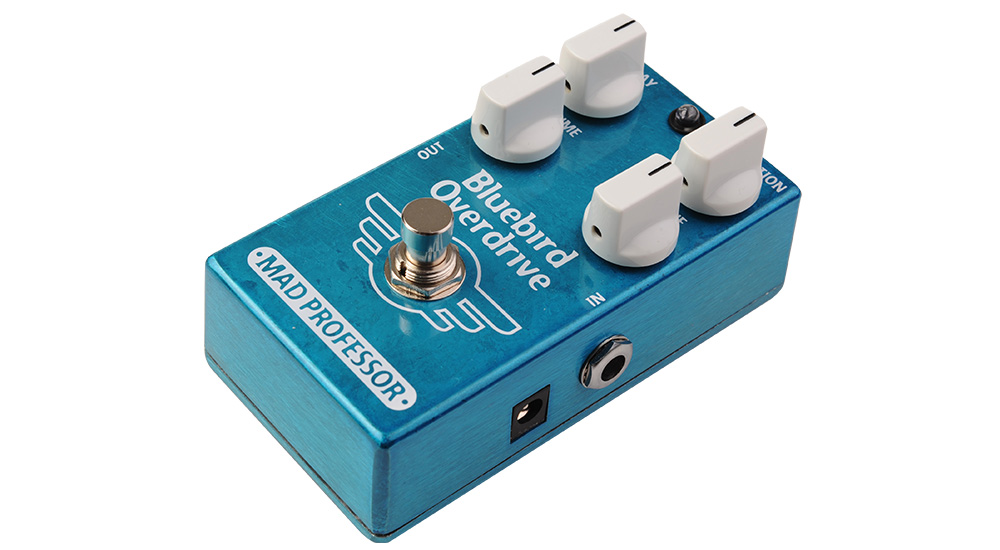Since SRV first kicked one on many blue moons ago, there have come and gone so many pedals professing to best the peerless, hotter-than-hell Tube Screamer sound. To purists, none have been able to topple the singular TS808 even if many have come within mere inches, and that’s without even mentioning the ongoing Klon saga. The clipping stage in the Bluebird is, to my mind, one of the tastiest attempts to do so in recent years. It is rich and warm in all the right places. With the drive knob dimmed it has ample creaminess and shimmering, natural harmonic overtones of any number of boutique amps run off their feet. Pull back to about a quarter of the level and you have something akin to the clean boosted glory of a Tumnus or a studio preamp; perfect if you’re looking to add colour to your overall tonality.
Having said all that, the best thing about the drive section of this little hot box is how responsive it is to your playing. Even with all knobs at 11, your picking velocity is the thing that drives how filthy it can be. Up against high output pickups it definitely cooks, but give it some headroom with a set of single coils or even a gold foil in the neck position and it absolutely comes to life. If you whisper on the string your note comes out snowflake soft, but if you lean into it with your pick hand then the Bluebird will floor it right alongside you. This is what it means for a dirt pedal to be sensitive; angry enough to help you burn the house down yet attentive enough to help you apologise moments later.
The other really successful thing about the Mad Professor’s little blue box is the inclusion of a delay control. Situated after the gain stage for extra clarity, the single dial in the top left corner controls how much of a simple, analogue delay you need to send your solo skyward. As standard, the delay rate is set to around 500 milliseconds, but you have the option of increasing repeats and/or switching over to a faster delay time via trim pots inside the chassis. This is where the pedal really starts to have a mind, and indeed a voice of its own. It’s like these crafty Finnish builders have heard their pedal and thought ahead, realising full well that matching this tasty dirt sound with a simple, Carbon Copy style delay is the fastest path to Tone Town and, as a favour, saved you the trouble and board space of having to buy two pedals.
While so many builders are busy trying to reinvent the wheel, trust the Scandinavians to take the pretense out of it and design a pedal that just does the trick. The clipping stage is every ambiguous adjective you can think of without going over the top and the in-built delay is the cherry on the top of a simple yet delicious cake.

